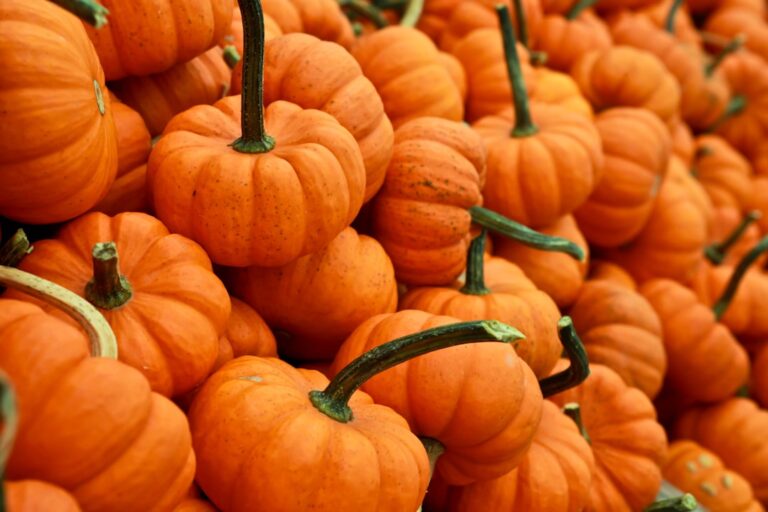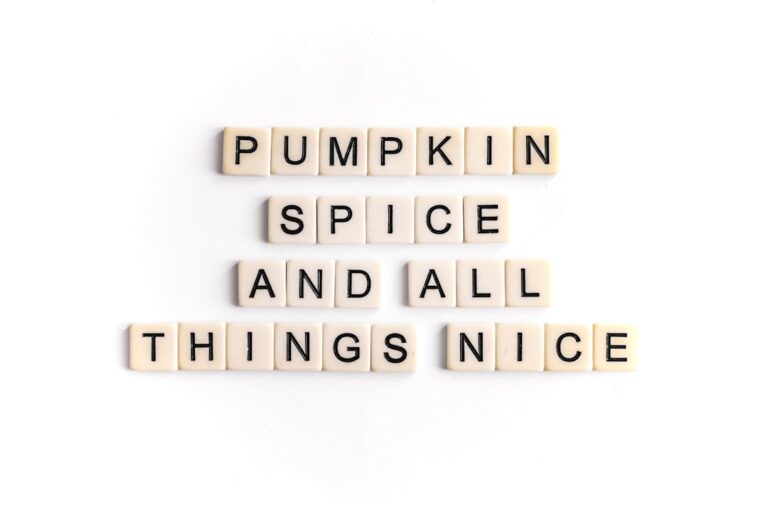Thanksgiving trivia is a fun way to bring people together and make any gathering memorable. Here’s how to create engaging trivia questions that everyone will enjoy:
- Focus on History: Include key events like the First Thanksgiving, Lincoln’s proclamation, and modern traditions.
- Mix Topics: Cover history, food, pop culture, and fun facts to appeal to all interests.
- Balance Difficulty: Use a mix of easy, medium, and hard questions to keep it fun for everyone.
- Vary Question Types: Use multiple-choice, true/false, open-ended, and picture-based questions for variety.
- Fact-Check Everything: Ensure accuracy by using reliable sources like historical archives and journals.
- Keep Questions Simple: Use clear, concise language to avoid confusion.
- Add Surprises: Include unexpected facts or stats to make the game more exciting.
- Test Your Questions: Get feedback from a small group to refine clarity and difficulty.
- Organize by Theme: Group questions into categories like history, food, and traditions for better flow.
- Make It Family-Friendly: Tailor questions to suit different age groups, from kids to adults.
Want pre-made trivia questions? Check out cheaptrivia.com for Thanksgiving-themed packs and weekly updates.
BEST THANKSGIVING TRIVIA QUIZ EVER!
1. Study Key Historical Facts
Start by digging into reliable historical records. Look for primary sources about the 1621 celebration and aim to uncover details that will both educate and surprise participants. Stick to verified information to ensure accuracy.
Key areas to focus on include:
- The relationship between the Pilgrims and the Wampanoag people
- Specific foods that were documented at the first celebration
- Prominent figures like Governor William Bradford
- How Thanksgiving traditions have changed over time
- Presidential proclamations and how the holiday became officially recognized
"Our trivia nights have been a huge boost to our Thursday evenings. Our community loves it, and we’ve seen an almost 300% increase in sales. Highly recommend!" – Dave (Owner), The 1762 At The Warwick Hotel
Accuracy matters, so organize your research by historical periods to cover Thanksgiving’s development over the years:
| Time Period | Key Focus Areas |
|---|---|
| 1621–1700 | First Thanksgiving, Early Colonial Period |
| 1700–1863 | Regional Celebrations, State Observances |
| 1863–1941 | Lincoln’s Proclamation, National Holiday Status |
| 1941–Present | Modern Traditions, Presidential Pardons |
Breaking it down like this helps you create trivia questions that touch on the holiday’s evolution. Combine historical insights with topics like food and traditions to make the experience more engaging.
Looking for fresh, ready-to-use content? Check out our weekly trivia subscription service at https://cheaptrivia.com/products/weekly-trivia-subscription-service. For Thanksgiving-specific ideas, browse our curated collection at https://cheaptrivia.com/collections/thanksgiving-trivia-theme-packs.
2. Mix Different Topics
Adding variety to your trivia questions can make the game more engaging for everyone. Including a mix of topics ensures there’s something for every player. Here are some ideas to consider:
- Historical Events: Questions about events like the First Thanksgiving or colonial customs.
- Food & Recipes: Explore traditional dishes and regional favorites.
- Modern Traditions: Cover parades, football games, or even Black Friday.
- Pop Culture: Dive into holiday-themed movies, TV specials, or songs.
- Fun Facts & Customs: Highlight unique family traditions or decorative practices.
This variety appeals to different age groups and interests. For example, younger players might love questions about parades, while history buffs enjoy exploring early traditions. To make it even more interactive, organize your trivia rounds by theme and incorporate visuals or audio clips.
Looking for ready-to-use trivia? Check out our weekly trivia subscription at cheaptrivia.com or browse our Thanksgiving-themed packs at cheaptrivia.com.
3. Balance Question Difficulty
When creating trivia, it’s important to strike a balance in question difficulty so everyone – from beginners to trivia pros – can enjoy the game.
Here’s a simple way to divide your questions:
- Easy Questions (30–40%): These should be straightforward and fun. Think basic historical facts, popular Thanksgiving dishes, or traditions like the Presidential turkey pardon.
- Medium Questions (40–50%): Slightly more challenging, these might touch on the Mayflower voyage, regional Thanksgiving customs, or key ingredients in traditional recipes.
- Hard Questions (20–30%): Save these for your trivia buffs. Include topics like obscure historical figures, detailed facts about turkey farming, or specific dates and statistics.
Start with the easy ones to build confidence, then gradually move to tougher questions. Test your questions beforehand – if most players take more than 30 seconds or fewer than 25% get them right, they may need tweaking. Adding bonus questions can also keep advanced players engaged while ensuring the game stays enjoyable for everyone.
Looking for ready-made questions? Check out our Thanksgiving trivia packs at cheaptrivia.com or subscribe to our weekly trivia service here.
4. Change Question Types
Mixing up question types is a great way to keep your Thanksgiving trivia lively and engaging for everyone. Different formats not only make the game more dynamic but also give participants with various strengths a chance to shine.
Here are some ideas for incorporating a variety of question types:
- Multiple Choice Questions: Perfect for testing knowledge of historical facts or specific details. Provide 3–4 answer options, keeping them similar in style and length. Make sure the incorrect answers sound believable to keep it challenging.
- True/False Questions: Great for addressing common myths or misconceptions about Thanksgiving traditions and history.
-
Open-Answer Questions: These require participants to recall information without prompts. Use these for topics like:
- Famous historical figures
- Popular Thanksgiving dishes
- Key elements of Thanksgiving parades
-
Picture-Based Questions: Adding visuals can break up the text and keep things interesting. Use images such as:
- Historical photos
- Maps of significant journeys like the Mayflower’s voyage
- Pictures of traditional Thanksgiving foods
- Culturally important visuals tied to the holiday
-
Fill-in-the-Blank Questions: These work well for memorable quotes, important dates, or key details. Examples include:
- Thanksgiving proclamations
- Ingredients in classic recipes
- Significant historical dates
To keep things fresh, consider organizing the questions into themed rounds, each focusing on a different type. This ensures a steady pace and keeps participants engaged throughout the game.
Want ready-made trivia questions in all these formats? Check out our Thanksgiving trivia packs at cheaptrivia.com/collections/thanksgiving-trivia-theme-packs or sign up for our weekly trivia subscription at cheaptrivia.com/products/weekly-trivia-subscription-service.
5. Check Your Facts
Once you’ve created a variety of question types, the next step is ensuring accuracy. For Thanksgiving trivia, getting the facts right is a must. A solid fact-checking process helps guarantee your questions are both reliable and engaging.
Here’s how to verify your facts effectively:
-
Start with Primary Sources
Look to original materials for the most accurate information. These can include:- The Library of Congress archives
- Plymouth Colony documents
- Presidential Thanksgiving Proclamations
- Historical newspapers and periodicals
-
Cross-Check Multiple Sources
Don’t stop at one source – compare details across at least three trusted references. Examples of reliable sources include:- Smithsonian Institution
- National Archives
- State Historical Societies
- Academic journals
- Museum collections
If you’re covering Native American history or perspectives, take extra care to use sources that authentically represent indigenous voices and experiences.
-
Keep Track of Sources
Document every source you use. This not only helps confirm your facts but also allows you to update questions later and adds credibility to your trivia.
Avoid These Common Pitfalls:
- Depending solely on popular websites or social media
- Using outdated materials
- Trusting widely repeated "facts" without verifying
- Confusing dates or details from different historical events
By steering clear of these mistakes, your trivia stays accurate and engaging.
Need trivia questions that are already fact-checked? Check out cheaptrivia.com/collections/thanksgiving-trivia-theme-packs for expertly crafted sets. You can also subscribe to our weekly trivia service at cheaptrivia.com/products/weekly-trivia-subscription-service for fresh, verified content delivered regularly.
A careful fact-checking process makes your trivia more reliable and enjoyable.
sbb-itb-4c464a8
6. Keep Questions Simple
Simple Thanksgiving trivia questions keep players engaged and make the game fun. Overly complicated language can quickly turn enjoyment into frustration.
Best Practices for Clear Questions:
- Use everyday language: Swap out complicated words for simpler ones.
- Keep sentences short: Stick to one main idea per question.
- Avoid double negatives: They only confuse players.
- Be specific: Direct questions get better answers.
Here’s how to simplify complex questions:
| Complex Version | Simple Version |
|---|---|
| "In which century did the historical occurrence of the initial harvest celebration, which would later become known as the American Thanksgiving holiday, take place?" | "When was the first Thanksgiving celebrated?" |
| "Which indigenous agricultural product, traditionally cultivated by Native American tribes, became a fundamental component of the inaugural Thanksgiving feast?" | "What Native American crop was served at the first Thanksgiving?" |
| "What variety of avian species traditionally serves as the centerpiece of contemporary Thanksgiving celebrations?" | "What bird do Americans typically eat for Thanksgiving dinner?" |
Tips for Structuring Questions:
- Start with the main idea: Focus on the key information you want to ask.
- Cut unnecessary details: Stick to relevant context only.
- Use active voice: It makes questions more direct and easier to follow.
- Simplify complex ideas: Break tough topics into smaller, easier questions.
Looking for ready-made, easy-to-understand Thanksgiving trivia? Check out our curated trivia packs at cheaptrivia.com/collections/thanksgiving-trivia-theme-packs. Want fresh trivia every week? Subscribe to our weekly service at cheaptrivia.com/products/weekly-trivia-subscription-service.
Simplifying your questions not only improves clarity but also sets the stage for creating more advanced trivia in the future.
7. Include Surprising Facts
Unexpected facts can turn simple trivia into a memorable and engaging experience. Adding these elements not only keeps players interested but also helps them learn something new along the way.
How to Use Unexpected Facts Effectively
When designing your questions, focus on these areas:
- Historical connections: Tie traditions to surprising origins.
- Cultural elements: Highlight little-known customs or practices.
- Modern relevance: Link historical facts to current traditions.
- Challenging statistics: Use data that goes against common assumptions.
Examples of Question Styles
| Standard Question Style | Surprising Fact Style |
|---|---|
| "What meat is traditionally served at Thanksgiving?" | "Which U.S. state eats the most turkey per person during Thanksgiving?" |
| "What year was the first Thanksgiving?" | "Who played a key role in making Thanksgiving a national holiday?" |
| "What foods were served at the first Thanksgiving?" | "Which popular Thanksgiving dish wasn’t part of the original celebration?" |
Tips for Crafting Memorable Questions
To create questions that stick:
- Start with something intriguing to grab attention.
- Provide just enough context to set the stage, but keep it concise.
- Ensure your facts are accurate and directly tied to the topic.
Using these surprising facts alongside historical and cultural questions can elevate your Thanksgiving trivia game. They’ll make your quiz more engaging and leave a lasting impression on participants.
Looking for ready-to-go, fact-checked trivia questions? Check out our collection at cheaptrivia.com/collections/thanksgiving-trivia-theme-packs or subscribe for weekly updates at cheaptrivia.com/products/weekly-trivia-subscription-service.
8. Get Feedback First
Once your Thanksgiving trivia questions are ready, the next step is to gather feedback. Testing your questions with a small, mixed group before the event can help ensure they are clear, appropriately challenging, and engaging. This step connects your preparation process with the experience your audience will have.
Tips for Collecting Feedback
Test Across Age Groups
Choose a test group that reflects your audience. For a family gathering, include both adults and kids to ensure the questions appeal to everyone.
Key Areas to Evaluate
Ask your testers to review these aspects:
- How clear and easy the wording is
- Whether the difficulty level feels right
- If the answers are accurate
- How long it takes to answer
- Overall enjoyment and engagement
Common Problems Feedback Can Identify
| Issue Type | Example Problem | Suggested Fix |
|---|---|---|
| Clarity | "What food item wasn’t present at the first celebration but is now traditional?" | "Which popular Thanksgiving dessert was not served at the first Thanksgiving in 1621?" |
| Difficulty | "In which year did Congress make Thanksgiving official?" | "Which U.S. President officially declared Thanksgiving a national holiday in the 1860s?" |
| Timing | Multi-part questions taking too long to answer | Split complex questions into simpler, focused ones |
Effective Feedback Collection Methods
Here are two ways to get actionable insights:
Trial Run
Run a mini version of your trivia with 3–4 people. Use this session to time responses, note any confusion, and test your scoring system.
Written Feedback
Share your questions in a document and ask participants to highlight:
- Any questions they find unclear
- Answers they’re unsure about
- Suggestions for improvement
Incorporate the feedback while keeping the spirit of your quiz intact. Pay attention to which questions people enjoy the most and which ones need adjustments.
Looking for ready-made, tested trivia questions? Check out our curated Thanksgiving trivia packs at cheaptrivia.com/collections/thanksgiving-trivia-theme-packs. You can also sign up for weekly trivia updates at cheaptrivia.com/products/weekly-trivia-subscription-service.
9. Group Similar Questions
Organizing your Thanksgiving trivia questions by theme can make the game flow naturally and help participants connect related ideas more easily.
Suggested Themes for Trivia Rounds
When creating your trivia game, focus on a few key themes to keep things engaging and structured:
- Historical Events: Questions about the first Thanksgiving, the Pilgrims, and Native American history.
- Food and Recipes: Dive into traditional dishes, cooking techniques, and regional favorites.
- Traditions and Customs: Explore parades, football games, and family traditions.
Example of Organized Categories
Here’s a simple way to structure your trivia questions by category:
| Category | Question Types | Example Topics |
|---|---|---|
| History | Facts, Dates, People | Mayflower, Plymouth Colony, Key Figures |
| Food | Ingredients, Recipes, Origins | Turkey Prep, Side Dishes, Regional Delights |
| Traditions | Customs, Events | Parades, Football Games, Family Rituals |
For more ideas, visit cheaptrivia.com/collections/thanksgiving-trivia-theme-packs. Want fresh content every week? Check out our subscription service at cheaptrivia.com/products/weekly-trivia-subscription-service.
Using these themes will make your quiz design smoother and set you up perfectly for crafting age-appropriate questions in the next section.
10. Make Questions Age-Appropriate
When planning Thanksgiving trivia, tailoring questions to suit different age groups ensures everyone can join in and enjoy. By adjusting the difficulty and topics, you can create a more inclusive and engaging experience for guests of all ages.
Age-Appropriate Question Examples
| Age Group | Question Style | Example Question | Why It Works |
|---|---|---|---|
| Kids (5–12) | Visual & Simple | "What color is a turkey’s tail when it fans out?" | Easy to answer using observation |
| Teens (13–17) | Pop Culture & History | "Which NFL teams traditionally play on Thanksgiving Day?" | Links sports to tradition |
| Adults | Complex History | "In which year did President Lincoln declare Thanksgiving a national holiday?" | Tests deeper historical knowledge |
Tips for Family-Friendly Questions
Use Simple Language:
Make sure questions are easy for younger players to understand. For example, instead of asking, "What indigenous tribe assisted the Pilgrims?" simplify it to "Which Native American group helped the first settlers?"
Incorporate Visual Elements:
For younger participants, focus on questions about things they can see or recognize, like:
- Thanksgiving foods
- Parade floats or balloons
- Holiday decorations
Add Bonus Components:
Create questions with both basic and bonus parts to keep all age groups engaged. For instance:
- Basic: "What bird is the star of Thanksgiving dinner?"
- Bonus: "What is the average weight of a Thanksgiving turkey?"
Cover a Variety of Topics:
Mix in questions about modern traditions, family-friendly movies, classic recipes, and simple historical facts to keep the game fun and diverse.
Want ready-made, age-appropriate Thanksgiving trivia? Check out our weekly subscription at cheaptrivia.com/products/weekly-trivia-subscription-service for fresh content delivered directly to your inbox. You can also explore our themed Thanksgiving Trivia packs at cheaptrivia.com/collections/thanksgiving-trivia-theme-packs.
With well-crafted questions, you can create a Thanksgiving celebration that everyone will remember.
Conclusion
Putting together Thanksgiving trivia questions takes a bit of planning, but it can be a lot of fun. By following these ten tips, you’ll be set to create questions that are both entertaining and informative.
What Makes Trivia Great?
To make your trivia stand out, focus on these key points:
- Ensure historical accuracy with proper fact-checking
- Include a variety of topics, from traditional to modern themes
- Write questions that suit different skill levels
- Use different formats to keep things interesting
- Make sure the content is suitable for all ages to keep it family-friendly
These steps will help you create a trivia experience that’s fun and easy to manage. If you’d rather skip the prep work, check out our pre-made Thanksgiving trivia packs or weekly subscription service. They’re available at cheaptrivia.com/collections/thanksgiving-trivia-theme-packs and cheaptrivia.com/products/weekly-trivia-subscription-service.
Whether you’re crafting your own questions or using pre-made ones, the goal is the same: bring people together and create lasting memories. With these tips, you’ll be ready to host an unforgettable Thanksgiving trivia night.






